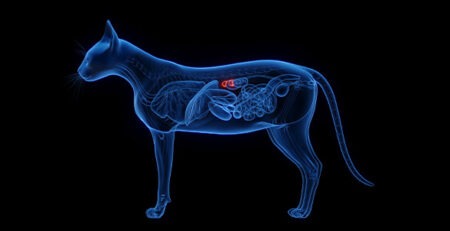Ataxia in dogs and cats is a neurological disorder characterized by a loss of coordination of movements that four-legged animals generally manifest in adulthood.
The term“ataxia” or ataxic syndrome refers to a group of disorders that affect the nervous system and more specifically:
-
- Cerebellar if the cerebellum is affected
- Vestibular when the cochlear vestibular nerve-that is, the nerve that carries the information needed for balance-from the ear to the brain is affected.
- Sensory in the case where the spinal cord is affected
Ataxia: the characteristic symptoms
In all three types, the animal tends to change the pattern of movements as it loses coordination of the limbs, but in vestibular ataxia and cerebellar ataxia, the muscles of the head and neck are affected in addition to the limbs.
The disease initially manifests with staggering of gait (ataxic walking, to be exact), muscle cramps and twitching, tremors, and decreased ability to manage distances.
Other symptoms that may occur are:
– excessive sleepiness
– changes in behavior
– Deafness, especially if the pathology affects the cochlear vestibular nerve
– loss of appetite due to nausea
– abnormal eye movements
The causes of ataxia
This serious condition is due to a variety of causes.
Here are those so far identified that contribute to degeneration of the cerebellum and spinal cord:
-trauma
-ictus
-tumors
-mercury poisoning
There are also causes present from birth, with symptoms that are not immediately apparent: we refer to the hereditary component and autoimmune reactions.
One fact is certain: the condition is degenerative and requires immediate specific treatments at the onset of the first symptoms.
Otherwise, the dog or cat, while compensating at an early stage for the loss of control and its own perception of space, will in time be unable to move.
So, celerity of diagnosis is extremely important.
The diagnosis of ataxia
In the presence of typical ataxia symptoms and to confirm the diagnosis, the dog and cat should first undergo specific blood and urine tests.
In addition, a CT scan or MRI and CSF analysis may be needed.
Treatment will differ depending on the cause of the disease and the severity of the situation.
The treatment for ataxia
If you suspect that your dog has ataxia, a timely appointment with your trusted veterinarian is essential.
We would like to remind you, in this regard, that at our facility you can submit your dog to a complete check-up and the necessary clinical examinations, taking advantage of the advice of specialized Veterinary Doctors.
And again, in case of need and urgency Clinica La Veterinaria is always open h24 every day including holidays and with First Aid service from 8 pm to 8 am.
For the joy of seeing them HAPPY











